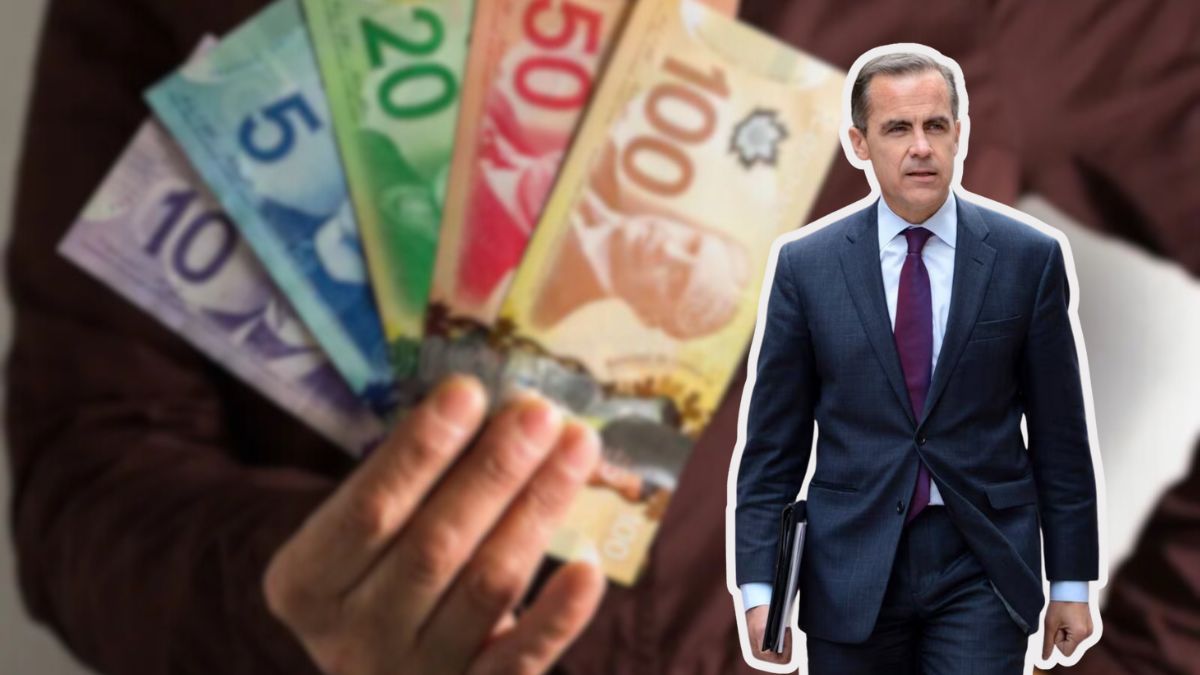In a major move to ease the financial burden on vulnerable households, the Government of Canada has confirmed a one-time \$2200 direct payment for 2025. The tax-free benefit, scheduled for October 29, 2025, is aimed at helping seniors, people with disabilities, and low-income residents who continue to struggle with rising living costs.
The support comes at a critical moment. Across Canada, the prices of food, rent, utilities, fuel, and healthcare have climbed sharply over the past year, disproportionately affecting those on fixed incomes. For many households, this payment represents a much-needed financial cushion to help with essentials.
Why This Payment Was Introduced
Canada’s inflation-driven affordability crisis has left many households stretched thin. While wage growth has slowed, everyday expenses such as groceries, housing, transportation, and energy continue to climb. Seniors on Old Age Security (OAS) or Guaranteed Income Supplement (GIS), as well as Canadians receiving Canada Pension Plan Disability (CPP-D) benefits, have been among the hardest hit.
The federal government has positioned the \$2200 one-time cash payment as a way to provide urgent relief. Officials say the money is flexible—it can cover rent, pay medical bills, reduce debt, or even go toward emergency savings. Unlike some programs tied to specific expenses, this payment gives recipients freedom to decide where the support is most needed.
Automatic Payments for Seniors and Disability Recipients
For many Canadians, the process will be automatic. If you are already receiving:
- Old Age Security (OAS)
- Guaranteed Income Supplement (GIS)
- Canada Pension Plan Disability (CPP-D)
you will not need to apply separately. As long as your banking details or mailing address are up to date, the money will be deposited directly into your account—or sent as a cheque—on October 29, 2025.
This ensures that the most vulnerable groups receive their money quickly without navigating additional paperwork.
Who Needs to Apply Manually?
Not everyone is automatically enrolled. If you are not currently receiving OAS, GIS, or CPP-D but believe you qualify based on your age, income, or disability status, you must apply by September 30, 2025.
Eligibility criteria include:
- Age: 65 or older by December 31, 2025. Individuals under 65 with long-term disabilities may also qualify.
- Residency: Must be a Canadian citizen or permanent resident with at least 10 years of residency in Canada.
- Income:
- Individuals: annual income under \$35000.
- Households: combined family income under \$45000.
These income thresholds may vary slightly depending on province and personal circumstances, but they provide a clear guideline for applicants.
How to Apply if You’re Not Enrolled
The federal government has simplified the application process to make it accessible. Canadians who believe they qualify can follow these steps:
- Check Eligibility: Use the online Benefits Finder tool at Canada.ca to confirm.
- Gather Documents:
- Government-issued ID (driver’s license, passport, or permanent resident card).
- Proof of Canadian address (utility bill, lease, or tax return).
- Proof of income (Notice of Assessment, T4, or pay stubs).
- Download Application Form: Available at Canada.ca or from a local Service Canada office.
- Submit Application: By mail or in person at Service Canada by September 30, 2025.
- Wait for Approval: Processing typically takes 4–6 weeks, after which you’ll receive a confirmation by letter or email.
Missing the deadline could mean missing out on this one-time benefit, so applicants are encouraged to act quickly.
When and How the Payment Will Be Delivered
The one-time deposit will be issued on October 29, 2025. Canadians will receive it in one of two ways:
- Direct Deposit: If you’ve set up banking information with Service Canada or the CRA, funds will be deposited directly.
- Cheque by Mail: For those without direct deposit, a cheque will be mailed to the address on file.
The government advises checking your information now to avoid processing delays.
What the Payment Can Be Used For
Unlike some forms of government support, the \$2,200 direct payment comes with no restrictions. Recipients may use it for:
- Rent or mortgage payments
- Groceries and household goods
- Utility bills (electricity, water, gas, heating)
- Medical expenses, including prescriptions
- Transportation (public transit, fuel, or car repairs)
- Emergency savings or unexpected costs
The flexibility of the payment means it can meet the most urgent needs of each household, no matter how different those needs may be.
Tax-Free Relief – No Repayment Required
One of the most reassuring aspects of the payment is that it is not taxable. Recipients will not need to declare it on their annual returns, nor will it reduce other benefits they may already be receiving.
This ensures the full \$2200 payment goes directly toward improving household budgets, without being clawed back through taxes or deductions.
What Canadians Should Do Now
To avoid last-minute hurdles, the government is advising Canadians to:
- Check Eligibility: Review your income and residency status.
- Update Your Information: Log in to CRA My Account or Service Canada to confirm your direct deposit details and address.
- Apply Before the Deadline: If you don’t automatically qualify, ensure your application is submitted by September 30, 2025.
- Prepare Documents: Keep ID, proof of address, and income statements ready.
- Spread the Word: Seniors, low-income families, and people with disabilities may not all be aware of this benefit. Sharing information could help ensure no one misses out.
The Broader Context: Addressing the Cost-of-Living Crisis
This \$2,200 direct payment is part of a larger debate about how governments should respond to the ongoing cost-of-living crisis. Critics argue that one-time payments are only temporary solutions, while supporters say they provide urgent relief when households need it most.
Economists note that such measures help stabilize family budgets during periods of high inflation, particularly when targeted at vulnerable groups. However, they also stress the need for long-term strategies, such as affordable housing, healthcare reforms, and sustainable pension programs.
For many Canadians, this support will provide not just financial help but also a sense of stability during uncertain economic times.
5 SEO-Friendly FAQs
Q1: Who qualifies for the \$2200 direct payment in 2025?
Seniors, people with disabilities, and low-income Canadians with incomes below set thresholds are eligible. Automatic payments go to OAS, GIS, and CPP-D recipients. Others must apply by September 30, 2025.
Q2: Do I need to apply for the \$2200 payment?
Not if you already receive OAS, GIS, or CPP-D. Others must apply with proof of age, residency, and income.
Q3: When will the payment be delivered?
The payment will be issued on October 29, 2025, either by direct deposit or cheque.
Q4: Is the \$2,200 payment taxable?
No. The payment is tax-free and does not need to be declared on your tax return.
Q5: What can the payment be used for?
It can be used for rent, groceries, utilities, medical costs, transportation, or emergency expenses—there are no restrictions.









